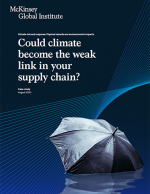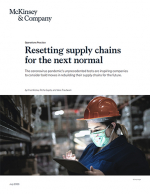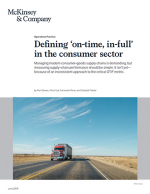Urban World: Mapping the Economic Power of Cities
Companies trying to identify the most promising growth opportunities need to be able to map this movement and spot the individual cities where their businesses are most likely to thrive.
Country-level strategies no longer have sufficient focus for many companies looking for growth.
India and China are continental-scale economies that are growing rapidly, but looking at them in their entirety is not targeted enough to unearth their market potential and to design tangible approaches to capturing that potential.
And there are interesting growth opportunities in emerging economies beyond the BRIC nations (Brazil, Russia, India, and China): For most companies Johore Bharu in Malaysia is a more important market than Jaipur in India or Jingzhou in China.
And it’s not just business that needs an intimate knowledge of which cities will be the new dynamos of the world economy. Local government leaders need detailed intelligence of individual cities to improve their odds of successfully managing them, while foreign services need to align their diplomatic efforts to support trade with the realities of the 21st century urban world rather than that of the previous century.
To shed light on the microeconomic dynamics of the global economy and inform business decision making, policy, and diplomacy, MGI has developed forecasts for demographic and economic data for more than 2,000 of the largest metropolitan areas around the globe. The resulting MGI Cityscope database enables executives and policy makers to identify leading cities based not only on their population but also on a broader set of criteria (“MGI Cityscope”).
The database includes, and analyzes, a large set of midsize cities - the middleweights - that are increasingly important to the world economy and to companies as growth markets.
The MGI Cityscope allows us to analyze the evolution of the world’s cities and their weight in the global economy at a granular level of detail. Among the many possible rankings available from the MGI Cityscope, the focus of this report is the City 600 group, which comprises the top 600 cities ranked by their contribution to global growth over the next 15 years.
Together, these cities contribute just over 60 percent to global growth. The importance of the City 600 is demonstrated by the fact that we estimate the next 400 cities ranked by their contribution to global growth add only about 6 percent on top of the contribution of the City 600.
Collectively, the cities of the MGI Cityscope, totaling around 2,000, are projected to contribute 75 percent of global growth to 2025.
What’s Related




Favorites





